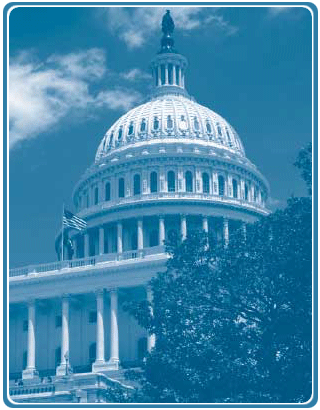| |
Commitment of Resources
The comprehensive plan established pursuant to subsection (a) shall require the commitment of funds made available to the Secretary under title I of the Emergency Economic Stabilization Act of 2008 in an amount up to $100,000,000,000 but in no case less than $40,000,000,000.
In a press conference Tuesday, Federal Housing Finance Agency director James Lockhart said the program would target high-risk borrowers — those 90 or more days delinquent on their mortgages — and employ various modification strategies to get borrowers down to an “affordable” mortgage payment, defined as 38 percent of a household’s monthly gross income on a first mortgage payment.
The Office of the Comptroller of the Currency and the Office of Thrift Supervision reported on 2009-04-03
- "Nearly one in four loan modifications in the fourth quarter actually resulted in increased monthly payments". This can occur when late fees or past-due interest are added to the monthly payment.
- The redefault rate was about 50 percent where the monthly payment was unchanged or increased, and 26 percent where the payment was decreased.
|
Home Affordable Modification Program
Program Formed
February 18th, 2009
Home Affordable Modification Program, also known as HAMP, is set out to help up from 7 to 8 million struggling homeowners at risk of foreclosure by working with their lenders to lower monthly mortgage payments. The Program is part of the Making Home Affordable Program which was created by the Financial Stability Act of 2009. The program was built as collaboration with banks, services, credit unions, the FHA, the VA, the USDA and the Federal Housing Finance Agency, to create standard loan modification guidelines for lenders to take into consideration when evaluating a borrower for a potential loan modification. Over 110 major lenders have already signed onto the program. The Program is now looked upon as the industry standard practice for lenders to analyze potential modification applicants.
Eligibility Requirements of Program
The program abides by the following eligibility and verification criteria:
- Loans originated on or before January 1, 2009
- First-lien loans on owner-occupied properties with unpaid principal balance up to $729,750
- Higher limits allowed for owner-occupied properties with 2-4 units
- All borrowers must fully document income, including signed IRS 4506-T, proof of income (i.e. paystubs or tax returns), and must sign an affidavit of financial hardship
- Property owner occupancy status will be verified through borrower credit report and other documentation; no investor-owned, vacant, or condemned properties
- Incentives to lenders and servicers to modify at risk borrowers who have not yet missed payments when the servicer determines that the borrower is at imminent risk of default
- Modifications can start from now until December 31, 2012; loans can be modified only once under the program
|
Payments to Servicers, Lenders, and Responsible Borrowers
- The Program will share with the lender/investor the cost of reductions in monthly payments from 38% DTI to 31% DTI.
- Servicers that modify loans according to the guidelines will receive an up-front fee of $1,000 for each modification, plus “pay for success” fees on still-performing loans of $1,000 per year.
- Homeowners who make their payments on time are eligible for up to $1,000 of principal reduction payments each year for up to five years.
- The program will provide one-time bonus incentive payments of $1,500 to lender/investors and $500 to servicers for modifications made while a borrower is still current on mortgage payments.
- The program will include incentives for extinguishing second liens on loans modified under this program.
- No payments will be made under the program to the lender/investor, servicer, or borrower unless and until the servicer has first entered into the program agreements with Treasury’s financial agent.
- Similar incentives will be paid for Hope for Homeowner refinances.
Transparency and Accountability
- Measures to prevent and detect fraud, such as documentation and audit requirements, will be central to the program.
- Servicers will be required to collect, maintain and transmit records for verification and compliance review, including borrower eligibility, underwriting, incentive payments, property verification, and other documentation.
- Freddie Mac is appointed the compliance officer of the program.
Free Resources for potential applicants
There are free resources available for potential applicants.
- The Federal government provides free resources to get you the help you need. Homeowners can call the Homeowner’s HOPE™ Hotline at 1-888-995-HOPE (4673) for information about the Making Home Affordable Program and to speak with a HUD approved housing counselor. Assistance is available in English and Spanish, and other languages by appointment.
- HUD.org is another free website where you may go to find a local counselor in your region. HUD.gov
- freeHAMPreport.com is another web resource that will help provide you with a commitment free and comprehensive assessment to see whether or not you are potentially eligible. Currently freeHAMPreport.com is the only online resource that provides analysis in regards to all tests: debt to income ratios, net present value, and also factors in eligibility requirements. freeHAMPreport.com
- MakingHomeAffordable.gov also has many resources for you to check online. It allows you to compute estimated payments as well as has other resources. Making Home Affordable
- Fannie Mae has a tool available where you can check to see if your loan is owned by Fannie Mae and thus potentially eligible for the program Fannie Mae Loan Look Up
- Freddie Mac has a tool available where you can check to see if your loan is owned by Fannie Mae and thus potentially eligible for the program Freddie Mac Loan Look Up
Lender Participants
For a complete and updated list of lenders currently signed on you can visit the Making Home Affordable website List of HAMP Lenders
Warnings to people looking to apply for loan modification programs
Foreclosure rescue and mortgage modification scams are a growing problem. Homeowners must protect themselves so they do not lose money or their home. Scammers make promises that they cannot keep, such as guarantees to “save” your home or lower your mortgage, oftentimes for a fee. Scammers may pretend that they have direct contact with your mortgage servicer when they do not
|
|
|







